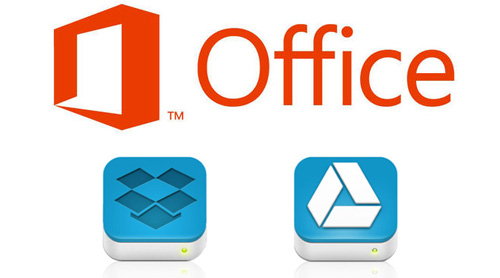Microsoft Office opens up to third party cloud storage
 Microsoft is about to get a “whole lotta love” from iOS users and, surprisingly, Android users as well. The software giant has upgraded its iOS version of Microsoft Office, to integrate third party cloud services, starting with Apple iCloud and the recently partnered DropBox.
Microsoft is about to get a “whole lotta love” from iOS users and, surprisingly, Android users as well. The software giant has upgraded its iOS version of Microsoft Office, to integrate third party cloud services, starting with Apple iCloud and the recently partnered DropBox.
The two new optional services will appear automatically in the Locations picker. The move is not entirely unexpected, as Google recently upgraded its cloud service to include editing of native Microsoft Office documents.
While this may seem simply part of Microsoft’s new direction in regards to universal apps, the nature of cloud storage offers a different version of why Microsoft has decided to broaden its users storage options.
Cloud storage is a touchy subject to users, especially as they are likely to switch from one service to another, not necessarily due to performance issues or capacity, but merely according to what apps are available to their favorite service, and in some cases, according to the way they feel in regard to perceived privacy and the threat of hacking, even when all major cloud storage services, from OneDrive, to iTunes, to Google Drive, offer rock-solid security and encryption, as well as two-step verification.
Microsoft third party cloud integration will speed up your PC
Microsoft is planning to extend support to all interested third parties, across all Windows 10 devices as well, enabling iCloud and DropBox users, as well as users of other services as well, to access their documents from their location of choice.
At the moment, desktop users who are looking to automatically sync their documents to the cloud on different services, are required to install third party software that allows them to share a folder on their hard drive.
The resource overhead for each of these apps can be considerable, in terms of bandwidth, as well as processing performance and memory. Every app that runs on the background, continuously synchronizing files, puts systems under constant stress, as well as accelerating wear of local storage devices, especially when storing data on regular SATA drives. Native integration is expected to work in a way that is far more refined and fine-tuned, using less CPU and memory resources, which will become extremely important towards the end of this year, when devices are expected to ship with Windows 10.